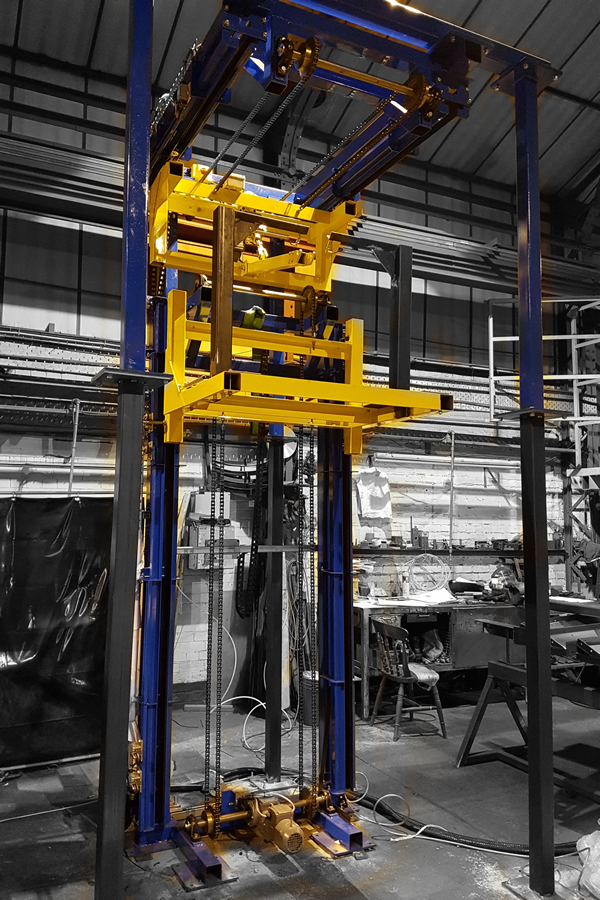London Lift Company: Trusted Experts for All Your Vertical Transportation Needs
London Lift Company: Trusted Experts for All Your Vertical Transportation Needs
Blog Article
Looking Into the World of Lifts: Common Concerns Dealt With by Various Lift Systems
As we browse via the vertical transport systems of modern-day buildings, lifts stick out as a crucial element of our lives. Nevertheless, behind their seamless operation exists a globe of elaborate devices that can often encounter difficulties. From hydraulic lifts to traction systems and machine-room-less layouts, each lift type features its set of typical concerns. Understanding these obstacles is essential for making sure the smooth functioning of these crucial systems. Allow's explore the intricacies that underlie the procedure of elevators and the prospective problems that can emerge, dropping light on the intricate internet of lift devices.
Hydraulic Lifts
Hydraulic elevators, typically favored for low-rise structures, use fluid stress to regulate the activity of the elevator automobile (lift repair companies). This system entails a hydraulic pump pressing oil right into a cylinder, causing the elevator to move in the desired direction. While hydraulic elevators are known for their peaceful and smooth procedure, they do feature their very own collection of usual concerns
One common issue with hydraulic elevators is oil leakage. The seals in the hydraulic system can wear gradually, causing oil infiltration. If left unaddressed, this not just develops a mess yet can additionally influence the lift's efficiency. Furthermore, problems with the control system, such as faulty shutoffs or a malfunctioning pump, can trigger interruptions in the elevator's movement.
Routine upkeep and prompt repairs are vital to ensure the smooth performance of hydraulic lifts. By addressing these common concerns proactively, structure owners can decrease downtime and make certain the security and efficiency of their vertical transport system.
Grip Elevators
When taking into consideration vertical transportation systems in structures, one more common kind other than hydraulic elevators is the grip elevator. Grip lifts operate making use of a system of ropes and counterweights that relocate the lift vehicle by clutching onto the hoist ropes. This device enables smoother and faster upright transportation contrasted to hydraulic systems.
One of the typical issues encountered by traction lifts is rope wear. The continuous activity of the ropes within the traction system can bring about tear and wear gradually, potentially triggering the elevator to malfunction or come to be risky for usage. Normal inspections and upkeep of the ropes are important to make sure the elevator's appropriate performance and safety.
One more issue that traction lifts might experience is connected to the control system. Problems with the control system can cause problems such as erratic movement, delays in response times, and even total closures. Regular testing and upkeep of the control system are essential to stop such concerns and guarantee the lift's integrity.
Machine-Room-Less (MRL) Elevators

One of the vital parts of MRL elevators is the portable gearless traction machine that is set up within the hoistway. This device successfully drives the elevator car without the demand for large tools discovered in typical traction lifts. Furthermore, MRL lifts normally use a weight system to balance the cars and truck, further boosting their energy effectiveness.
Despite their advantages, MRL lifts might face difficulties associated with repair and maintenance due to the confined space for equipment setup. Access for servicing components within the shaft can be limited, needing specialized training for professionals. Proper maintenance routines and regular assessments are critical to ensure the continued smooth operation of MRL elevators.
Overloading and Weight Limitation Issues
Are lifts outfitted to deal with excess weight tons effectively and securely? Overwhelming and weight restriction concerns websites are essential concerns in lift procedures. Lift makers style raises with certain weight capabilities to make sure traveler security and devices official site durability. Surpassing these weight limitations can result in various problems, including mechanical failings, delays, and safety hazards.
When lifts are overwhelmed, it puts too much stress on the motor, cables, and various other elements, potentially creating breakdowns or break downs. If they find excess weight, security devices such as sensors and overload sensing units are in place to protect against elevators from relocating. Furthermore, exceeding weight limitations can lead to raised energy consumption and damage on the elevator system.
To minimize overwhelming concerns, building supervisors should plainly show weight restrictions in elevators and inform occupants on the value of adhering to these limitations - lift repair companies. Normal maintenance checks by certified service technicians can additionally assist make certain that elevators are operating within secure weight parameters. By attending to overloading and weight limit issues proactively, building owners can boost lift safety and security and efficiency
Electrical System Failings
Going beyond weight limits in elevators can not just lead to mechanical concerns yet additionally possibly contribute to electrical system failures within the lift facilities. Electric system failures are a vital issue in elevator operation, as they can create unanticipated closures, malfunctions, or even security risks.
Regular upkeep and inspections are essential to identify and attend to potential electric concerns immediately, ensuring the effective and safe procedure of lift systems. By adhering to weight restrictions and conducting regular electric system checks, building owners can mitigate the threat of electrical failures in lifts.
Verdict

Hydraulic elevators, typically preferred for low-rise structures, utilize fluid stress to control the activity of the elevator car.When considering upright transport systems in buildings, an additional usual type apart from hydraulic elevators is the traction lift. Grip elevators operate using a system of ropes and weights that move the lift cars and truck by grasping onto the hoist ropes. Unlike traditional elevators that call for a separate maker area to house the devices, MRL lifts incorporate most of the parts within the shaft, eliminating site the requirement for a committed device space.In verdict, elevators face usual issues such as hydraulic malfunctions, traction system failings, and electric system problems.
Report this page